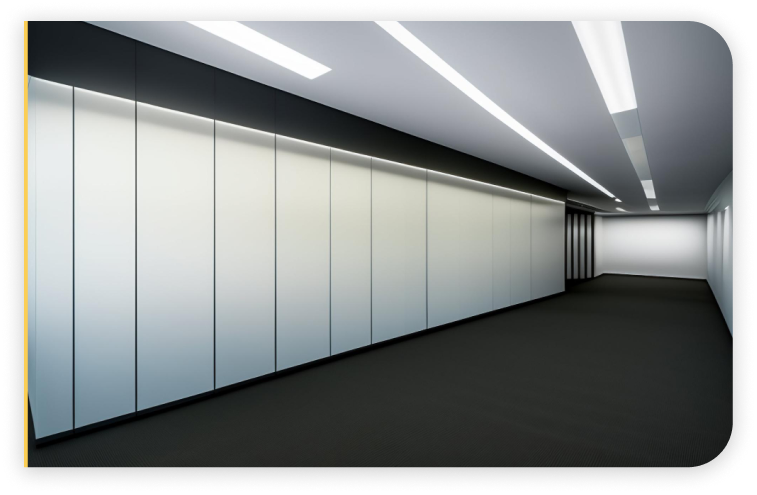February 19, 2024
Drywall, also known as gypsum board or plasterboard, is a crucial component in the construction of interior walls. Its versatile and cost-effective nature has made it the go-to material for creating smooth, durable surfaces in homes and commercial spaces alike. In this blog post, we’ll delve into the basics of drywall, exploring its composition, installation process, and the various types available in the market.
What is Drywall?
- Drywall is a panel made of gypsum plaster pressed between two thick sheets of paper. Gypsum, a soft sulphate mineral, is renowned for its fire-resistant and sound-absorbing properties. The combination of gypsum and paper creates a stable and easily workable material, making it an ideal choice for interior wall construction.
A. Composition of Drywall:
Gypsum Core:
- Gypsum’s fire-resistant properties: The crystalline structure of gypsum naturally resists fire, providing a level of safety to interior spaces.
- Sound absorption: Gypsum’s porous nature helps in dampening sound, making it an excellent choice for creating acoustically friendly environments.
Paper Facings:
- Front paper: The outer layer, often treated for a smooth finish, is the visible surface that gets painted or decorated.
- 2.Back paper: The back layer provides structural integrity and stability to the drywall panel.
B. Types of Drywall:
Standard Drywall:
- Used for most interior walls.
- Available in various thicknesses, including 1/2-inch and 5/8-inch.
Moisture-Resistant Drywall (Green Board):
- Ideal for areas with high humidity, such as bathrooms and kitchens.
- Features a water-resistant facing to prevent damage from moisture.
Fire-Resistant Drywall:
- Incorporates additional materials for enhanced fire resistance.
- Categorized by fire-resistance ratings (e.g., Type X).
C. Drywall Installation Process:
Framing:
- Wooden or metal studs are installed to create the framework for the drywall.
- Studs are typically spaced at 16 or 24 inches apart.
Cutting and Fitting:
- Drywall sheets are measured, cut, and fitted onto the framed structure.
- Special attention is given to openings for doors, windows, and electrical outlets.
Attaching:
- Drywall panels are attached to the framing using drywall screws or nails.
- Joints are taped, and joint compound (mud) is applied for a seamless finish.
Finishing:
- Sanding and priming prepare the drywall for painting or other decorative finishes.
- Texture may be added for aesthetic purposes.
Dealing with drywall problems doesn’t have to be a daunting task. With the right knowledge and tools, many issues can be resolved without the need for professional assistance. Regular maintenance and prompt repairs can help keep your drywall in excellent condition, ensuring a smooth and visually appealing finish for your home or office.
February 19, 2024
Mastering the Canvas: A Comprehensive Guide to Drywall Basics
Drywall, also known as gypsum board or plasterboard, is a crucial component in the construction of interior walls. Its versatile and cost-effective nature has made it the go-to material for creating smooth, durable surfaces in homes and commercial spaces alike. In this blog post, we’ll delve into the basics of drywall, exploring its composition, installation process, and the various types available in the market.
What is Drywall?
- Drywall is a panel made of gypsum plaster pressed between two thick sheets of paper. Gypsum, a soft sulphate mineral, is renowned for its fire-resistant and sound-absorbing properties. The combination of gypsum and paper creates a stable and easily workable material, making it an ideal choice for interior wall construction.
A. Composition of Drywall:
Gypsum Core:
- Gypsum’s fire-resistant properties: The crystalline structure of gypsum naturally resists fire, providing a level of safety to interior spaces.
- Sound absorption: Gypsum’s porous nature helps in dampening sound, making it an excellent choice for creating acoustically friendly environments.
Paper Facings:
- Front paper: The outer layer, often treated for a smooth finish, is the visible surface that gets painted or decorated.
- 2.Back paper: The back layer provides structural integrity and stability to the drywall panel.
B. Types of Drywall:
Standard Drywall:
- Used for most interior walls.
- Available in various thicknesses, including 1/2-inch and 5/8-inch.
Moisture-Resistant Drywall (Green Board):
- Ideal for areas with high humidity, such as bathrooms and kitchens.
- Features a water-resistant facing to prevent damage from moisture.
Fire-Resistant Drywall:
- Incorporates additional materials for enhanced fire resistance.
- Categorized by fire-resistance ratings (e.g., Type X).
C. Drywall Installation Process:
Framing:
- Wooden or metal studs are installed to create the framework for the drywall.
- Studs are typically spaced at 16 or 24 inches apart.
Cutting and Fitting:
- Drywall sheets are measured, cut, and fitted onto the framed structure.
- Special attention is given to openings for doors, windows, and electrical outlets.
Attaching:
- Drywall panels are attached to the framing using drywall screws or nails.
- Joints are taped, and joint compound (mud) is applied for a seamless finish.
Finishing:
- Sanding and priming prepare the drywall for painting or other decorative finishes.
- Texture may be added for aesthetic purposes.
